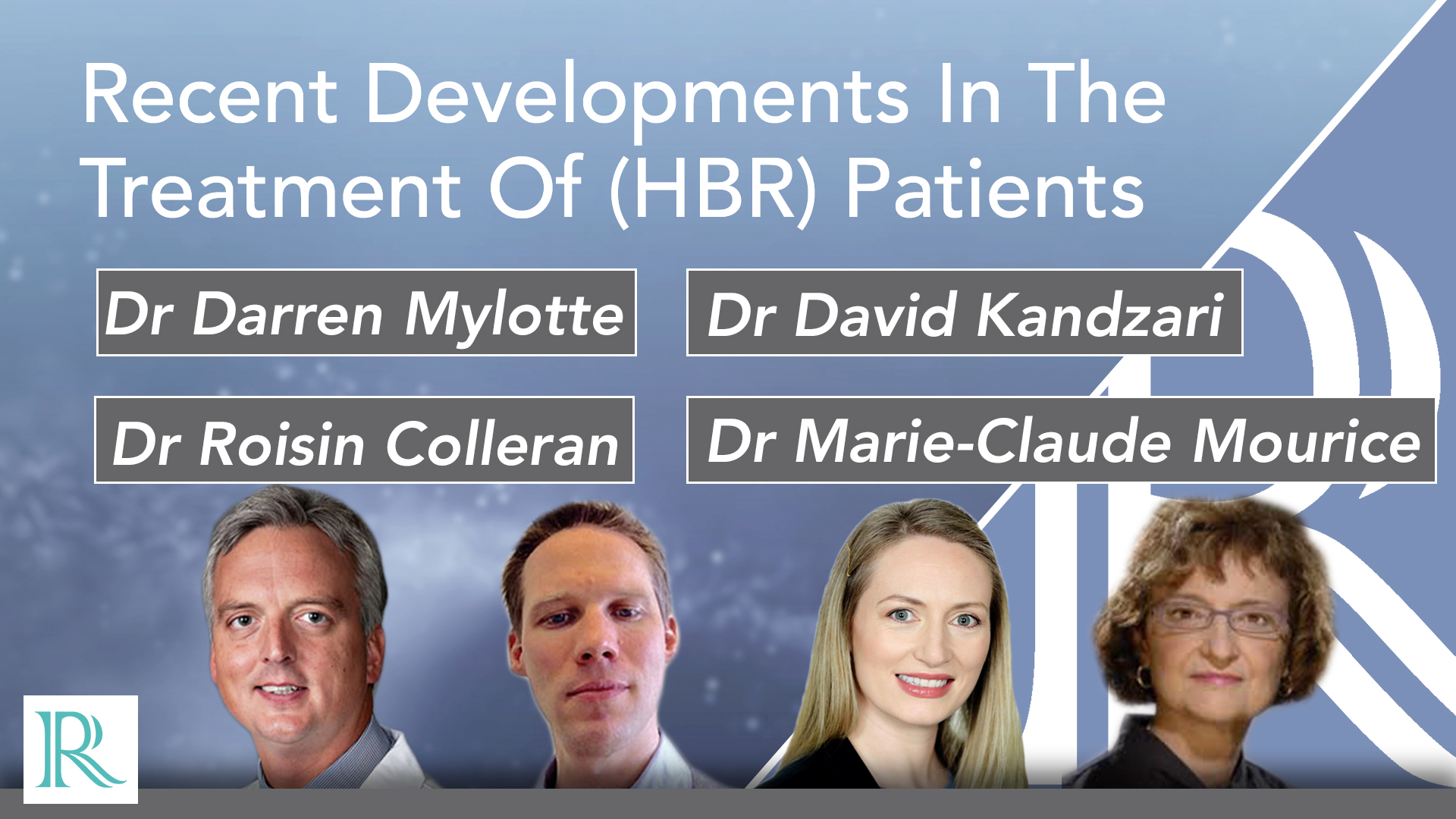Recent Developments In The Treatment Of (HBR) Patients
Published: 23 January 2021
-
Views:
 61259
61259
-
Likes:
 7
7
-
Views:
 61259
61259
-
Likes:
 7
7
Overview
Learn more about the most recent developments in the treatment of (HBR) patients with coronary artery disease through videos, interviews and panel discussions with renowned faculty from highly ranked institutions.

Key Learning Objectives
- To emphasize the importance of defining high bleeding risk in patients undergoing PCI
- To increase identification of high bleeding risk patients and learn how to apply this in your clinical practice
- To highlight the Onyx One Clinical Program, including sub-analysis and the relevance for your daily practice
More from this programme
Part 1
Ischemic and Bleeding Outcomes in Patients With vs. Without Atrial Fibrillation (AF) – insights from the Onyx ONE program
Part 2
Complex PCI with 1-month DAPT in HBR patients - insights from the Onyx ONE program
Part 3
High Bleeding Risk Patients: Identifying the ‘forgotten’ population – Do we have the tools?
Faculty Biographies

Darren Mylotte
Consultant Cardiologist
Dr Darren Mylotte graduated from RCSI Medical School in 2001, obtained membership of the Royal College of Physicians in Ireland in 2004, and completed the Irish Cardiology Specialist Training Scheme. He and was conferred with a Doctor of Medicine (MD) thesis in 2010 by the Royal College of Surgeons in Ireland and has also undertaken a PhD thesis. N the subject of Transcatheter Aortic Valve Implantation (TAVI) at the world renowned ThoraxCentre in Rotterdam, The Netherlands.

David Kandzari
Director of Interventional Cardiology and Chief Scientific Officer
Dr David Kandzari obtained his undergraduate degree from Duke University School of Medicine then completed his internship and residency at The John Hopkins University School of Medicine in Baltimore, Maryland. Following his residency, he completed his general and interventional cardiology fellowship at Duke University where he joined the faculty as the John B. Simpson Assistant Professor of Interventional Cardiology and Genomic Sciences.
Dr Kandzari has held national and international leadership roles in clinical trials in cardiovascular disease and has participated in national and international program committees in cardiology. He has authored and coauthored more than 150 studies, book chapters and scientific reviews. Dr Kandzari is board certified in internal medicine and cardiovascular diseases and is certified by the Board of Interventional Cardiology. He specializes in interventional cardiology, peripheral arterial disease and cardiovascular medicine. His…






